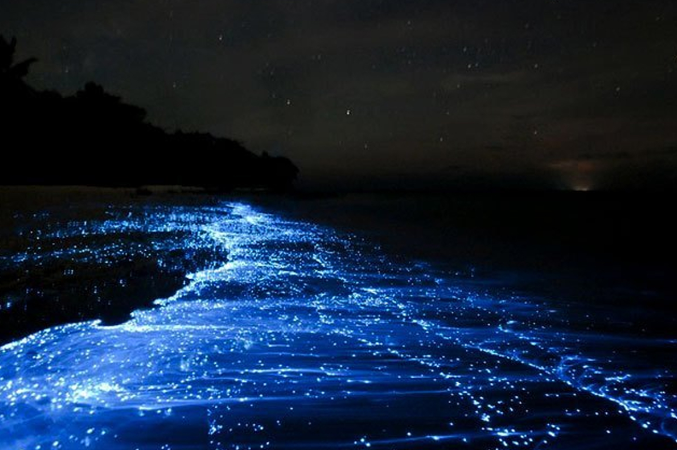A mesmerizing bloom of bioluminescent microorganisms that drew large crowds to Singapore’s beaches earlier this year has returned, lighting up the wat
A mesmerizing bloom of bioluminescent microorganisms that drew large crowds to Singapore’s beaches earlier this year has returned, lighting up the waters once again.
Blue Glow Spotted off Sentosa Island
Alan, a local hairstylist, captured a striking video on the night of Nov. 22, showing a bright blue glow in the waters off Sentosa Island. The motion of a yacht’s propeller stirred the bioluminescent organisms, causing the water to sparkle intensely with a brilliant blue light.
Alan shared the footage with Clarence Sim, a PhD student from Nanyang Technological University (NTU), who specializes in studying Singapore’s marine plankton. Earlier that day, Sim had already identified the same species of dinoflagellates, Noctiluca scintillans, during his sampling work at St. John’s Island and Raffles Lighthouse.
These dinoflagellates, responsible for the enchanting blue glow, emit light when agitated by movement. Visible to the naked eye, they appear greenish due to the presence of thousands of algae they host.
Sim suggests that this bioluminescence may be visible for the next few days at locations such as Sentosa, East Coast Park, and Pasir Ris Park.
Third Bloom This Year
According to NTU Associate Professor Federico Lauro, Noctiluca scintillans blooms are generally harmless. However, Lauro noted that these blooms may act as “a thermometer,” indicating favorable conditions for more harmful algae to thrive in Singapore’s waters. He also suggested that these recurrent blooms could signal environmental changes in the region’s waters.
While the current data doesn’t point to an immediate threat, continued occurrences of these blooms may require closer attention.
Harmful Algal Blooms in Singapore
Lauro’s lab, known as the Singapore Laboratory for Integrative Microbial Ecology (S.L.I.M.E. Lab), received funding to investigate harmful algal blooms after a particularly destructive event in early 2015. That bloom led to the death of 700,000 kg of farmed fish off the coast of Changi, causing significant financial losses.
Harmful algal blooms, which deplete oxygen in the water and can be toxic to marine life, have historically been a concern in Singapore, with events recorded in 2014, 2013, and 2009. However, the region hasn’t seen such a harmful bloom in seven years.
Warmer temperatures and nutrient runoff into the ocean contribute to the emergence of these blooms. While the current bloom of Noctiluca scintillans is harmless, it raises questions about the future health of Singapore’s marine ecosystems.
Lauro noted that the bloom observed earlier this month has since subsided, but continued monitoring remains essential.



COMMENTS